One of the most talked-about – and photographed – F&B destinations this year is Fico, an inviting Italian restaurant along East Coast Road helmed by Chef Mirko Febbrile in collaboration with The Lo & Behold Group. The restaurant is designed by Nice Projects, a design firm established by the architecturally trained Sacha Leong and Simone McEwan. Both had met while working in reputed design firm Studiolise in London.
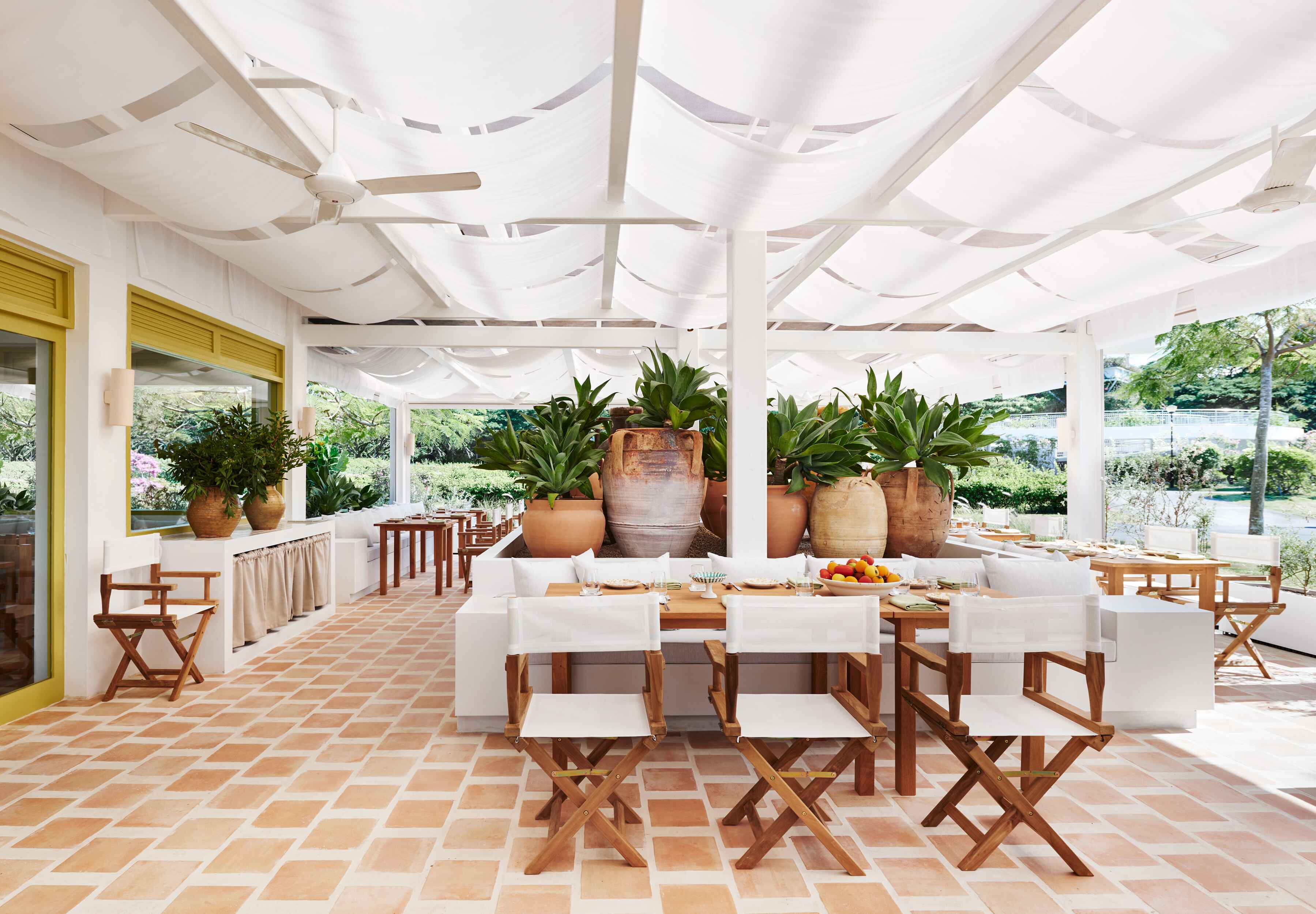 Large pots from Puglia planted with Agaves greens the outdoor terrace at Fico
Large pots from Puglia planted with Agaves greens the outdoor terrace at Fico
Aside from Fico, the firm also designed the Michelin-starred Odette, Claudine, Le Bon Funk in Holland Village, and The Coconut Club at Frankel Avenue for The Lo & Behold Group. These spaces are well thought-out, deeply textured, and rich with notable elements that reflect each venue’s cuisine.
Fico was inspired by the traditional rural farmhouses – or masserias – found in Puglia in Southern Italy where Febbrile is from and that inspired the cuisine. Banquettes, simple timber tables, and hand-woven chairs help convey this image that is equally suited to the laid-back breeziness of its seaside locale. It is a distinctive space, with floors of terracotta squares and a cloth ceiling at the outdoor seating area that billows in the wind.
(Related: Timeless Beauty)
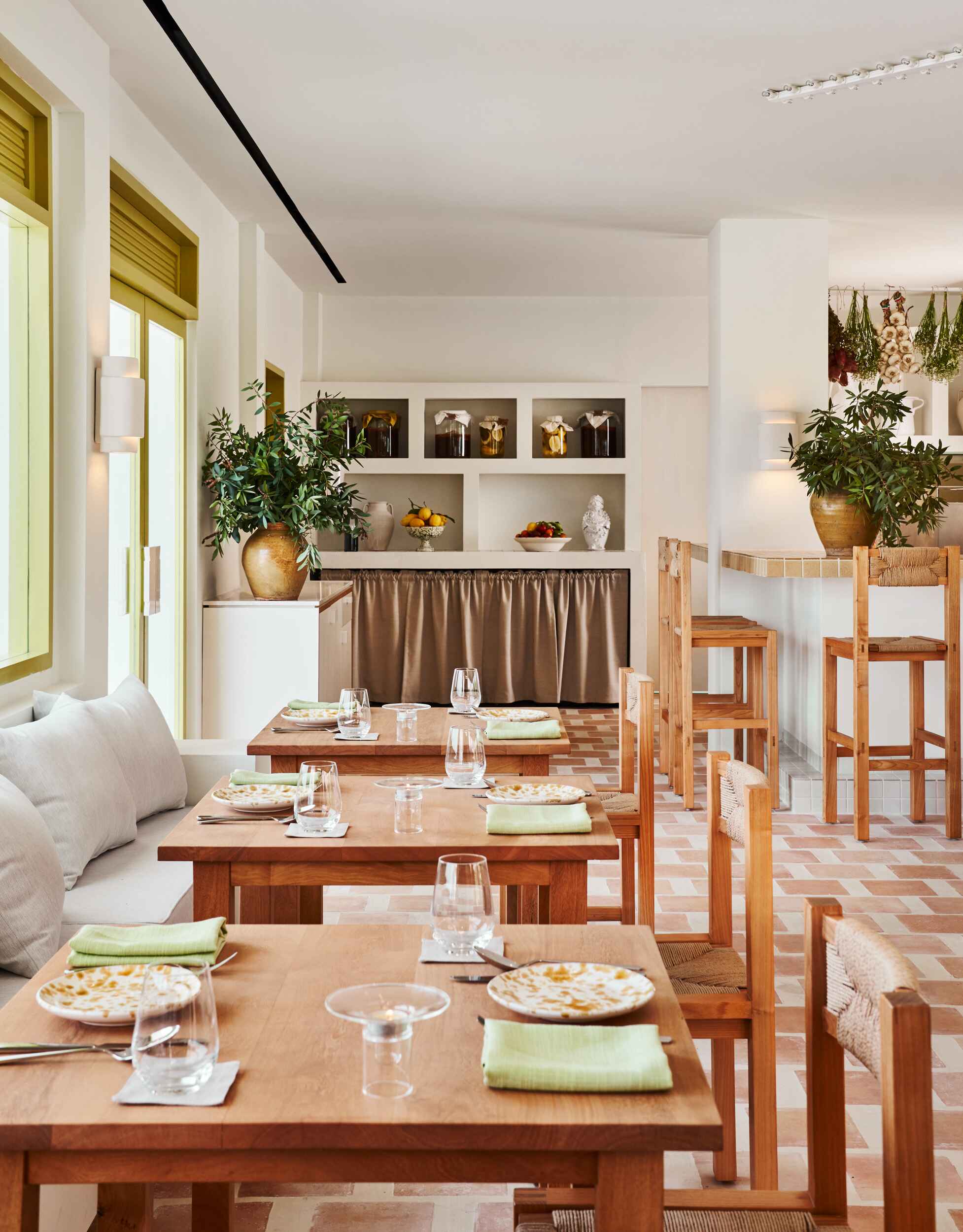 In Fico, the handwoven chairs are made in Thailand and bespoke tableware by Ceramiche Nicola Fasano
In Fico, the handwoven chairs are made in Thailand and bespoke tableware by Ceramiche Nicola Fasano
In The Coconut Club, the pair developed a “vocabulary” of design elements that not only gives the eatery a distinctive identity but can also be adapted for future outlets. “We wanted to explore an interior design language celebrating regional craft within a distinctively contemporary Singaporean context. We were excited to work with Indonesian makers for the custom oversized rattan pendants and the bespoke woven banquettes. We also commissioned local designers Tanchen Studio to design a beaded curtain,” offers the Singapore-born, London-based Leong.
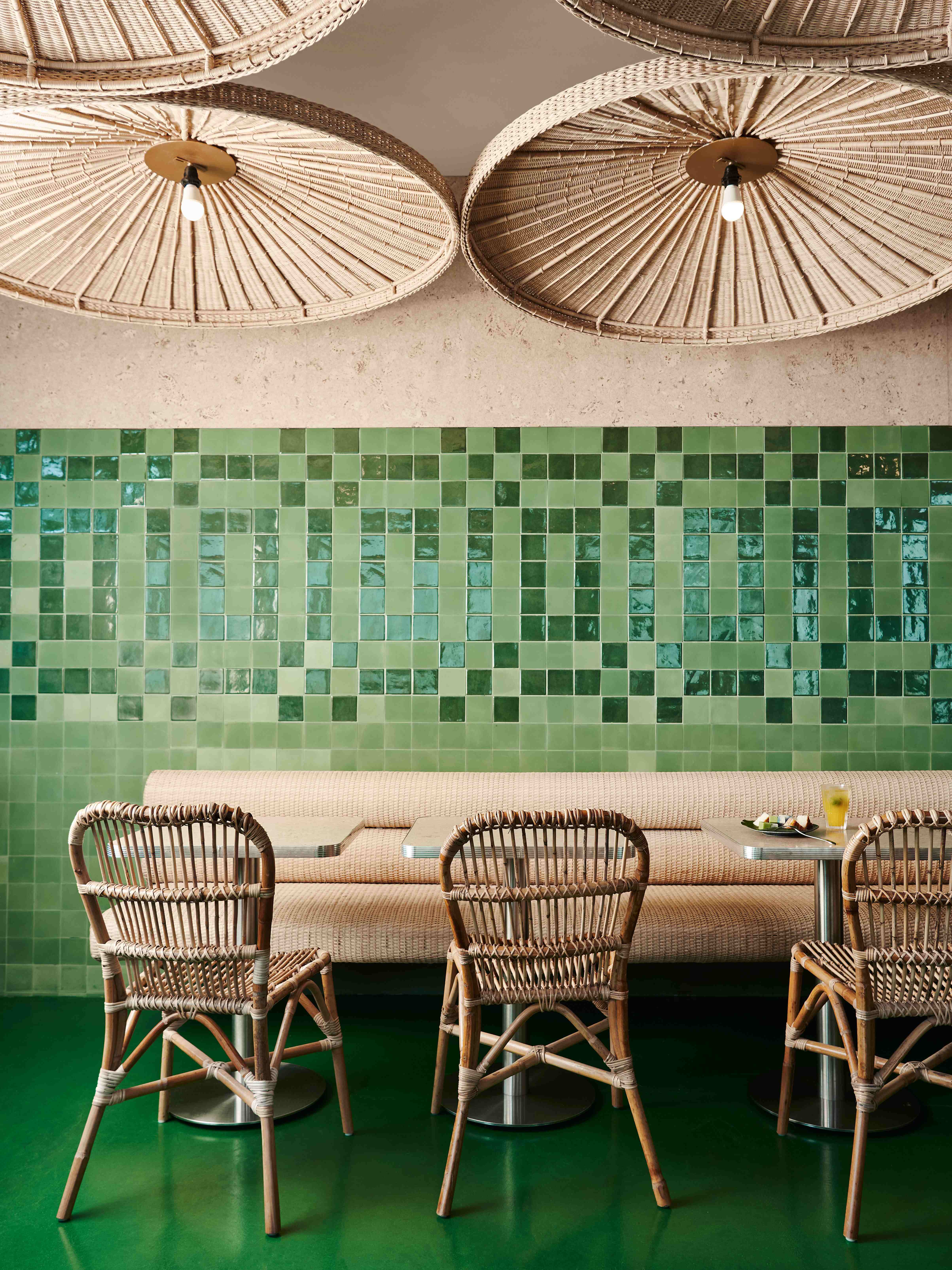 Nine oversized custom rattan pendant lights made by Indonesian weavers take centerstage at The Coconut Club at Frankel Avenue
Nine oversized custom rattan pendant lights made by Indonesian weavers take centerstage at The Coconut Club at Frankel Avenue
He expounds on the firm’s approach of responding to the local context. “We’re less interested in design trends, but more in finding out what makes each site and each project unique. We like to make spaces that bring people together, put people first and use materials that last.”
The firm’s penchant for artisanal touches is apparent. In Fico, it takes the form of a ceiling light feature made by Parisi 1876, a traditional lighting company from Puglia, inspired by street festival lighting in the town. The designers also worked with local makers Roger & Sons to produce the tables from fallen Tembusu trees in Singapore. “It was important that they were well-made, solid timber pieces that would age well. The chairs are made in Thailand, but reference a vernacular everyday rustic chair found all over Italy. All the plateware and serveware were sourced from a ceramic company in Puglia where we loved seeing all the hanging tomatoes and chillies – a detail we recreated in Singapore,” Leong describes.
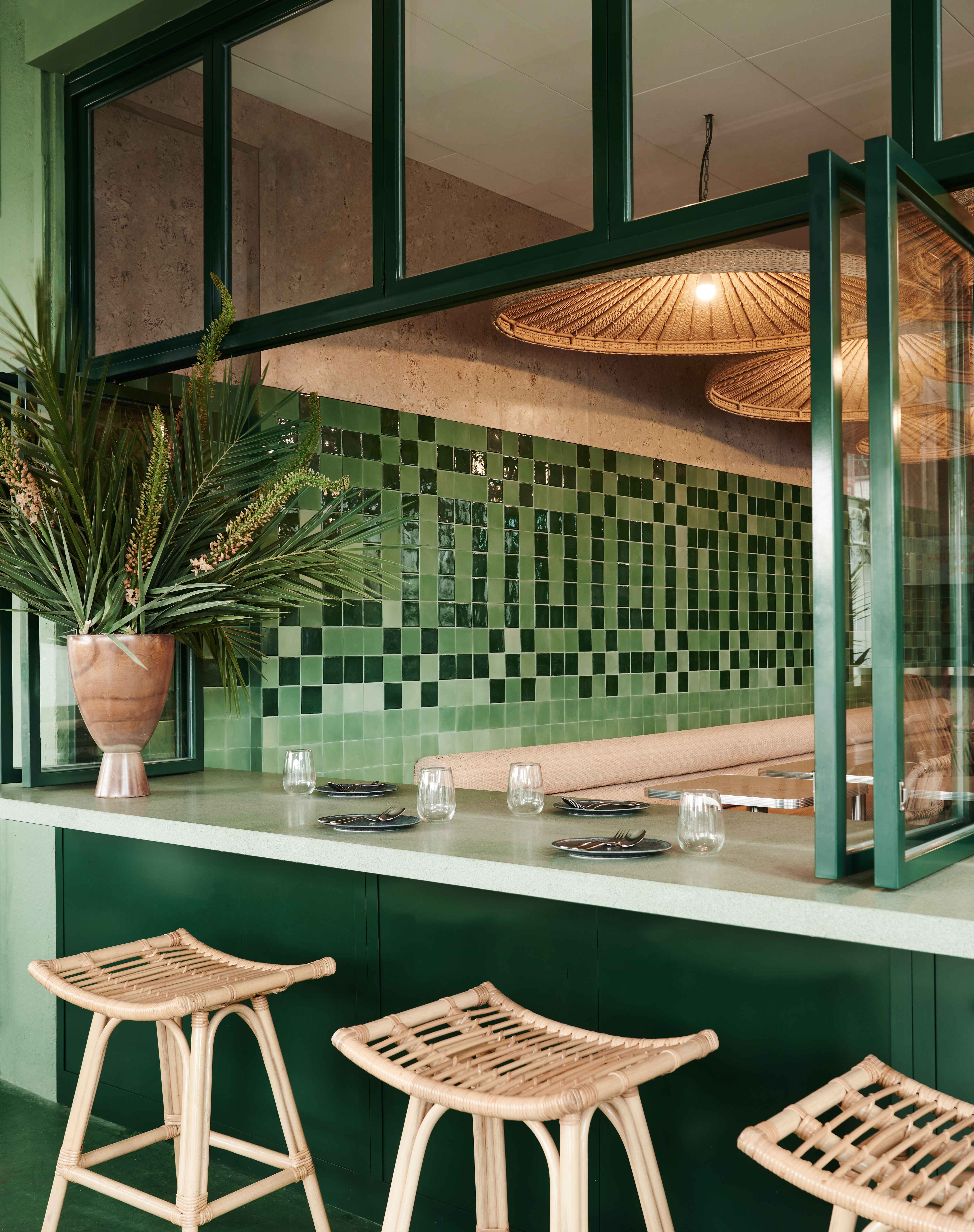 The Coconut Club has window seats with a terrazzo counter, encaustic tiles, and bamboo stools sourced from Southeast Asian makers and manufacturers
The Coconut Club has window seats with a terrazzo counter, encaustic tiles, and bamboo stools sourced from Southeast Asian makers and manufacturers
In the case of Claudine, set in the old Ebenezer Chapel in Dempsey Hill, an immersive art piece executed by botanical studio This Humid House uses locally foraged plants to create fifty large pressed foliage panels that line the building, representing Chef Julien Royer’s philosophy of sourcing and transforming the best ingredients into inventive dishes.
Leong’s meticulous eye for detail is palpable. As a teenager, he would seek out museums and art galleries for inspiration whenever he travelled. Leong later studied architecture at Carnegie Mellon University in the United States, but was always interested in different disciplines of design, interning at various small design studios in London during his university days to feed this curiosity.
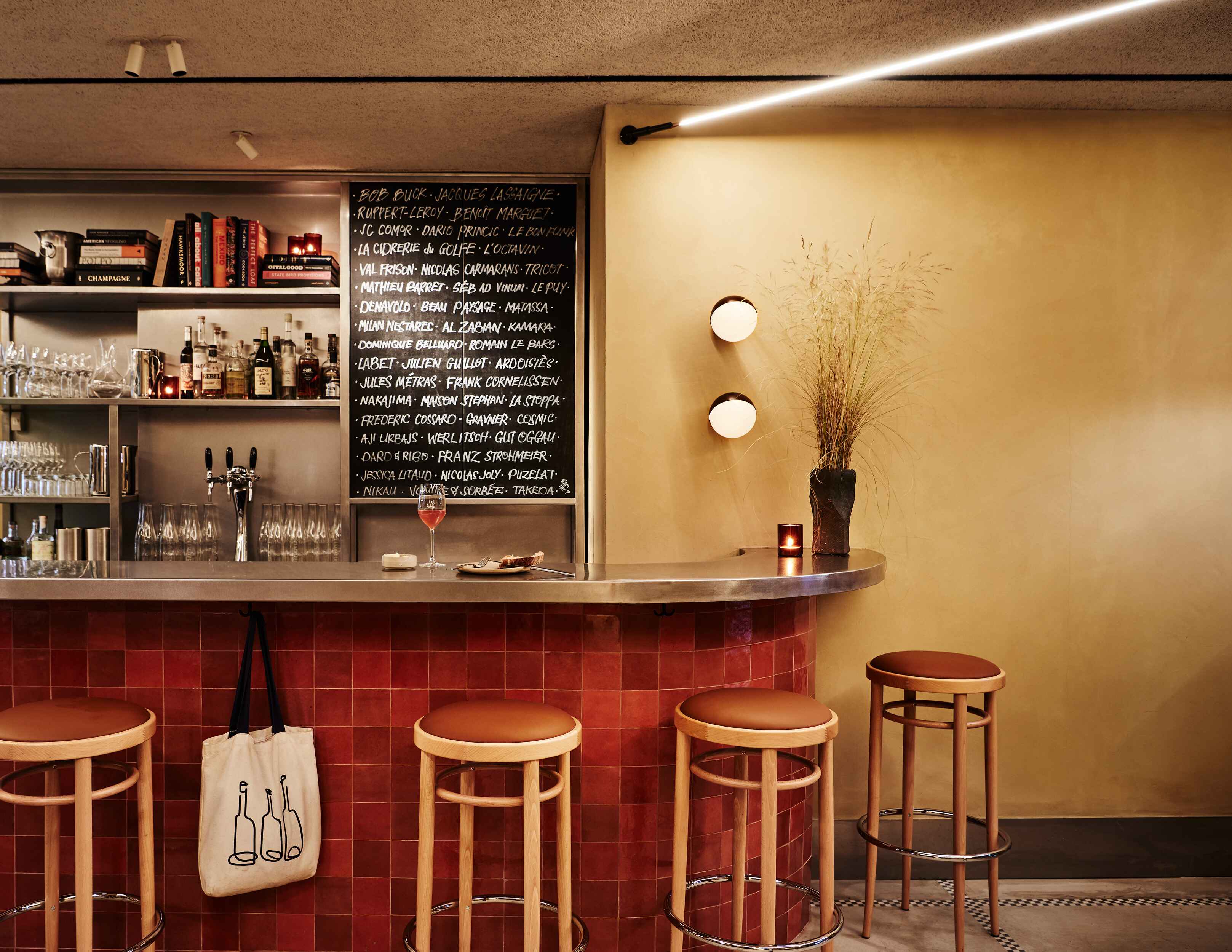 In Le Bon Funk at Holland Village, a stainless steel bar counter is paired with classic bentwood stools
In Le Bon Funk at Holland Village, a stainless steel bar counter is paired with classic bentwood stools
Following a Masters degree at The Bartlett School of Architecture in London, Leong worked at award-winning architectural practice Universal Design Studio founded by famed designers Edward Barber and Jay Osgerby. “It was a good place for me to grow my portfolio and learn the full range of design ranging from exhibition design to retail and hospitality,” he contemplates. There, he worked on the Ace Hotel in Shoreditch where he was able to shape an entire project for the first time. “It was a defining experience and I learnt a lot from working with such progressive operators,” he shares. A subsequent stint at Studioilse improved his knowledge in hospitality design, benefitting his work for The Lo & Behold Group.
“At Nice Projects, we really love working with operators like The Lo & Behold Group because they are passionate about finding really unique sites in Singapore and in creating new and lasting hospitality offers. And they really understand and appreciate the value of good design,” says Leong.
He met Wee Teng Wen, Managing Partner of The Lo & Behold Group, in London socially through a mutual friend and the pair clicked over shared interests in culture, art, design and discourses on what makes cities interesting. “Odette at the National Gallery was our first project together, and was a process that we both enjoyed and led naturally to our collaboration on other projects,” Leong explains.
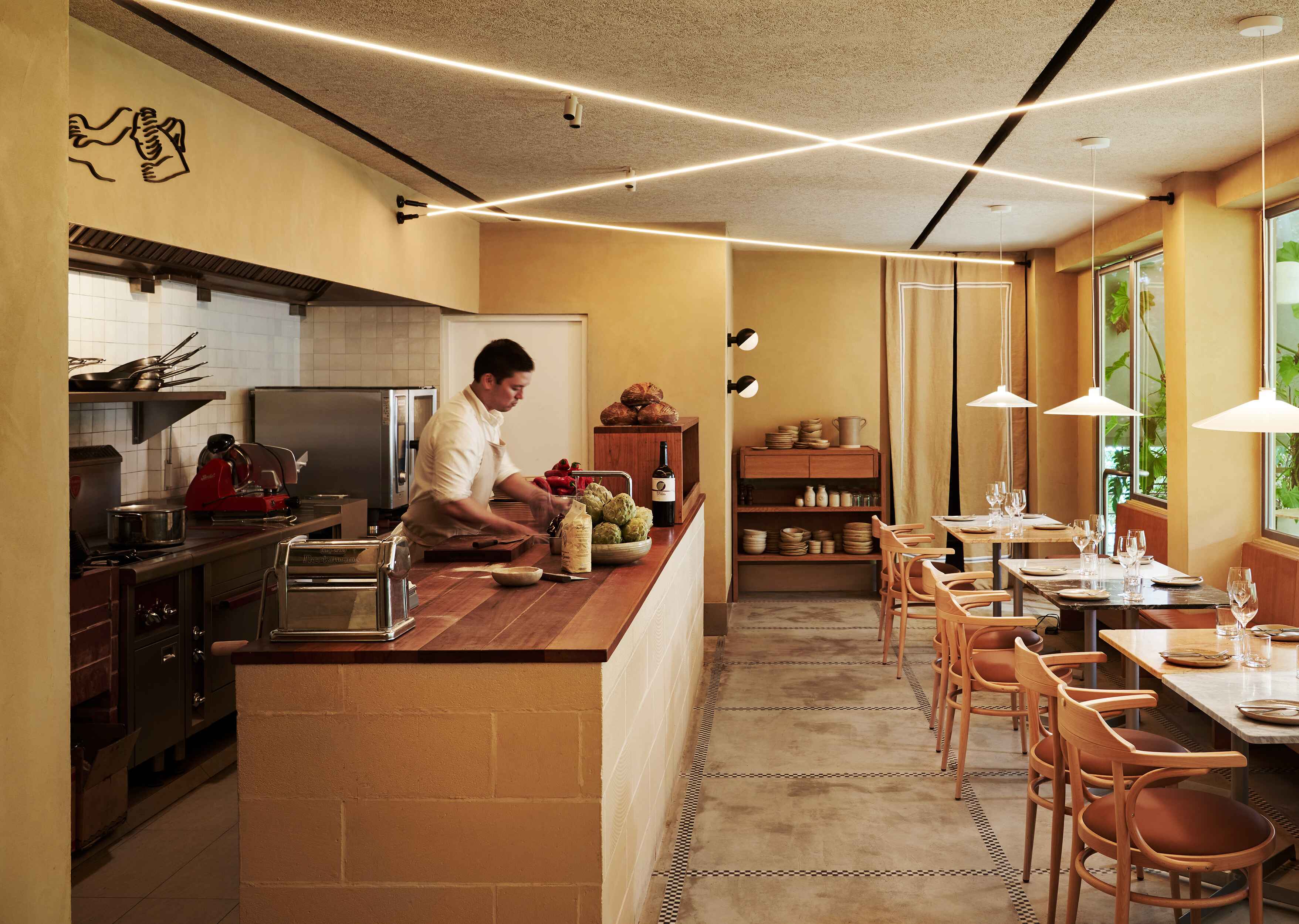 In Le Bon Funk at Holland Village helmed by Chef Keirin Buck, Nice Projects created a warm and informal atmosphere
In Le Bon Funk at Holland Village helmed by Chef Keirin Buck, Nice Projects created a warm and informal atmosphere
Aside from art, Leong draws creative input from travel. The mosaic floor of Le Bon Funk in Holland Village was inspired by the floor of an old bank that he chanced upon in Brussels, he shares. “Being based in London, it’s easy to visit all the European cities. I’m always interested in vernacular designs, which feel familiar but special when placed in a new context; I’m always curious about what elements makes an interior feel good and am always photographing a floor pattern or an interesting detail whenever I travel. There’s inspiration to be found everywhere and for me, it’s about how we reimagine and combine these different elements,” he expounds.







 Large pots from Puglia planted with Agaves greens the outdoor terrace at Fico
Large pots from Puglia planted with Agaves greens the outdoor terrace at Fico
 In Fico, the handwoven chairs are made in Thailand and bespoke tableware by Ceramiche Nicola Fasano
In Fico, the handwoven chairs are made in Thailand and bespoke tableware by Ceramiche Nicola Fasano
 Nine oversized custom rattan pendant lights made by Indonesian weavers take centerstage at The Coconut Club at Frankel Avenue
Nine oversized custom rattan pendant lights made by Indonesian weavers take centerstage at The Coconut Club at Frankel Avenue
 The Coconut Club has window seats with a terrazzo counter, encaustic tiles, and bamboo stools sourced from Southeast Asian makers and manufacturers
The Coconut Club has window seats with a terrazzo counter, encaustic tiles, and bamboo stools sourced from Southeast Asian makers and manufacturers
 In Le Bon Funk at Holland Village, a stainless steel bar counter is paired with classic bentwood stools
In Le Bon Funk at Holland Village, a stainless steel bar counter is paired with classic bentwood stools
 In Le Bon Funk at Holland Village helmed by Chef Keirin Buck, Nice Projects created a warm and informal atmosphere
In Le Bon Funk at Holland Village helmed by Chef Keirin Buck, Nice Projects created a warm and informal atmosphere



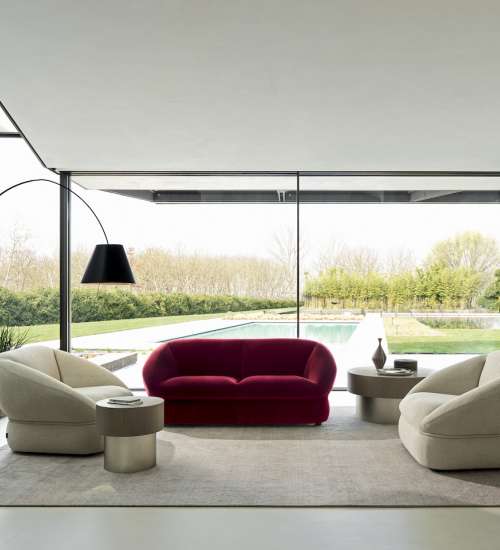
 Back
Back
